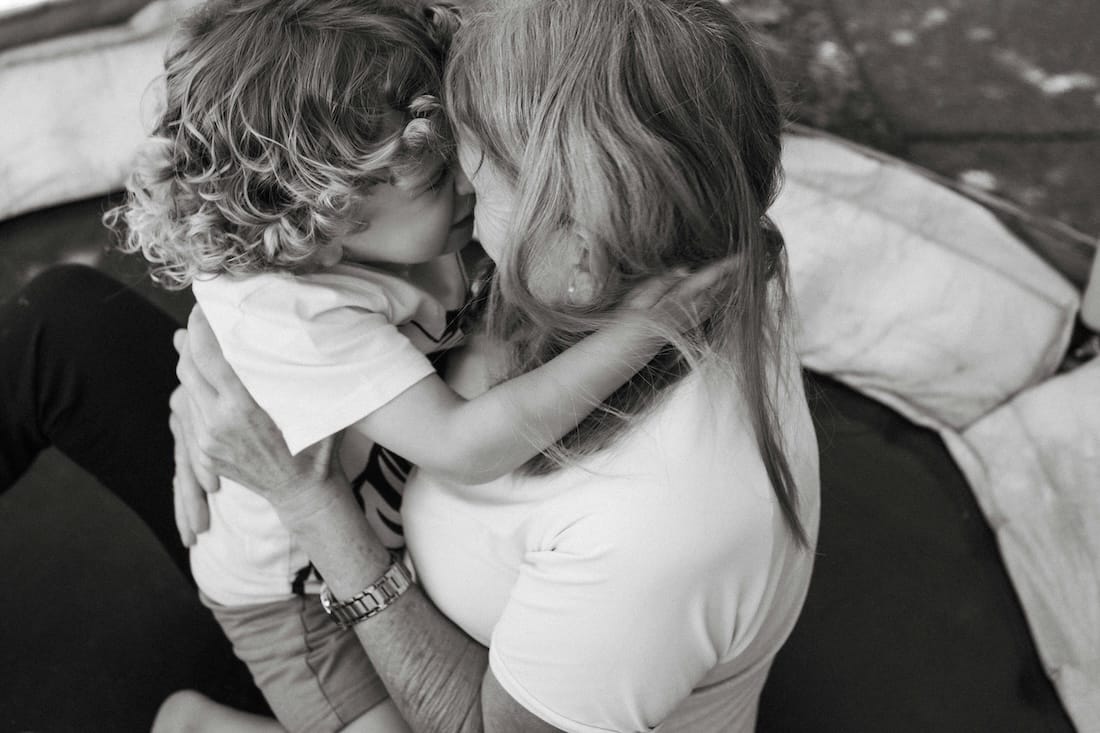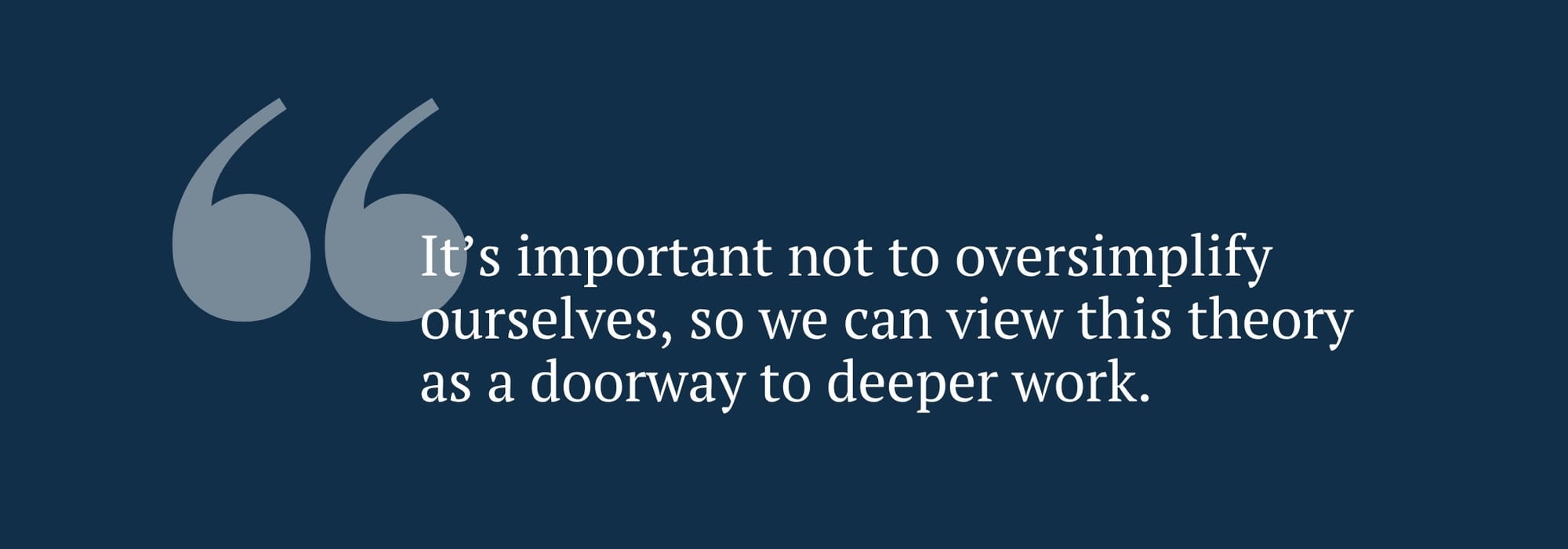Here, we explore the four attachment styles, and how we can use them as a framework for self-reflection and creating space for supportive connections
“I think you might be going out with another avoidant,” were the words I recently said to a close friend who’s on the dating scene, possibly making a snap judgement about some early signs of emotionally unavailable behaviour (or my interpretation of it, at least).
As a mental health writer, I’ve encountered attachment theory before, and felt connected to the concept that early bonds with our caregivers can shape our adult relationships. But, perhaps, I’ve unconsciously slipped into the trap of pigeonholing behaviour, especially after seeing the many rapid-fire ‘attachment style’ posts that pop up on my online algorithm.
So, I was excited to dive deeper into the four different attachments – secure, avoidant, preoccupied (or anxious), and disorganised – and, more importantly, open up a conversation about how we can better support and love each other, moving forward.
What exactly is attachment theory?
Known as the father of attachment theory, British psychologist John Bowlby extensively researched attachment styles, highlighting how the parent/child relationship establishes our expectations and needs in adult relationships. Bowlby believed that strong emotional connections with caregivers were a part of human nature, with the attachment figure providing what is known as a “secure base” in which the child can explore their environment, and a “haven of safety” during moments of distress or threat. His research indicates that being close to a protective adult is crucial to evolution, and keeping babies safe from potential danger.
Psychologist Mary Ainsworth translated Bowlby’s work into practice with her Strange Situation assessment, discussed in 1970 in the journal Child Development. During the study, researchers observed how each child behaved when their mother left the room, and how they responded when she returned. Based on these observations, Ainsworth concluded that securely attached children seek comfort from their parent, anxiously attached children show much upset when the parent leaves but aren’t comforted when they come back, and avoidantly attached children look for little comfort from their parent.
Later, in 1986, researchers Main and Solomon proposed a disorganised attachment style, in which children displayed conflicted or even fearful behaviours as they reconnected with their caregiver after separation.
The theory takes the idea that these childhood bonds can lay the groundwork for future relationships, and influence attachment patterns in later life.

Working out your attachment style
As you read about attachment, how do you feel when you get close to someone? Perhaps you feel at ease, or maybe you get overwhelmed, scared, or anxious. Many would say the latter, and that’s OK. Let’s work through the four attachment styles, and how to feel more secure in your relationships.
Secure attachment
Someone with a secure attachment tends to have good self-esteem and a healthy communication style, understanding that they deserve love and respect. A secure attachment generally means feeling comfortable in close relationships, and when spending time alone.
Attachment theory reveals that individuals who feel they can count on others in adulthood had their emotional needs met when growing up. A study published in the American Psychological Association journal shows that 51.6% feel securely attached to their primary caregivers, while just under half feel otherwise.
Having been in a relationship with my husband for nearly 25 years, I wanted to ‘tick off’ securely attached – but then I really explored the avoidant attachment style.
Avoidant attachment
An avoidant or dismissive attachment style can manifest as keeping people at a distance and feeling trapped in relationships. It can result in hyper-independence, or a need to maintain control to avoid feelings of vulnerability or emotional intimacy.
Feeling like you don’t belong can be at the root of this self-sabotage pattern, and, according to attachment theory, you may have experienced neglect or rejection from one or more of your parents growing up. This trauma can be overt, or manifest as a parent falling short of your needs, such as playing down your emotions.
If you recognise these patterns, try to remember that you don’t need to do it all by yourself. Communicating your wish for appreciation and positive reinforcement, especially when it comes to practical support, can help you connect more fully.
Anxious attachment
A preoccupied or anxious attachment can bring to light a fear of rejection or abandonment, resulting in insecurities, jealousy, or ‘clingy’ habits.
The need to hold on tightly in romantic relationships can be a reaction to inconsistent or unpredictable parenting, such as a parent who swings between being detached and pulling you close, or making you feel responsible for their emotions.
If this rings a bell, self-soothing, such as positive affirmations or grounding techniques, is key to anxious attachment healing. Developing good boundaries can also help you prioritise your wellbeing. Moving away from external approval with the aim of seeing yourself as an equal can, over time, mean you’re able to meet your own needs.

Disorganised attachment
A disorganised or fearful attachment can show signs of both avoidant and preoccupied styles, such as fluctuating between anxious, angry, or possessive to withdrawn, or extremely self-reliant.
This confusing behaviour can be due to the chaotic environment experienced at home, which, for some, can include persistent neglect or trauma, and, for others, can feel like they never know what they’re going to experience from one day to the next – otherwise known as eggshell parenting. Instability in childhood can mean being hypervigilant or untrusting of your partner in adult life.
Feeling unworthy can be at the core of this behaviour, and, if this strikes a chord, working through healthy relationship skills and developing a sense of self-compassion can help build loving connections, and lessen the overriding instinct to protect yourself from getting hurt.
Moving forward
What’s true is that we all need to love and feel loved, and attachment theory teaches us how to do this better. However, it’s important not to oversimplify ourselves, so perhaps, instead, we can view this theory as a doorway to deeper work. Knowing our main attachment style and understanding who we’re attracted to is just the first step to developing the self-awareness needed to challenge negative thought processes, and be emotionally available. But it’s the beauty of consistency that urges us to take responsibility for how we treat ourselves and others on an ongoing basis.
Some of us may slot neatly into one of the four attachment styles, however, our connections can differ depending on our circumstances and stage in life, so I’m open to this being a spectrum – and not forgetting the element of surprise.
We’re a tender mix of many traits, after all – but it’s these layers and complexities that give us the strength to evolve and understand each other better.


Comments